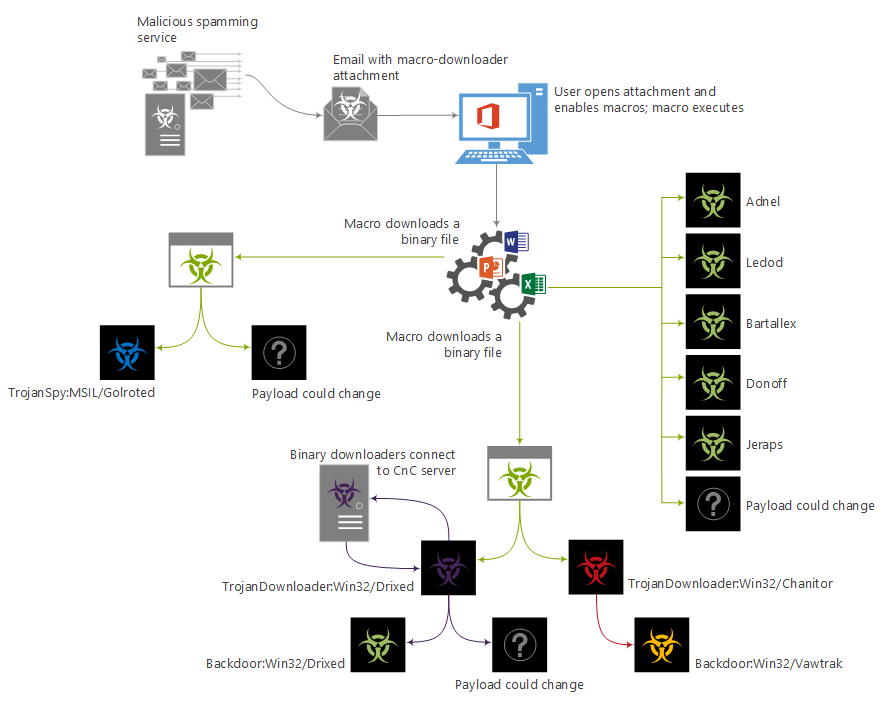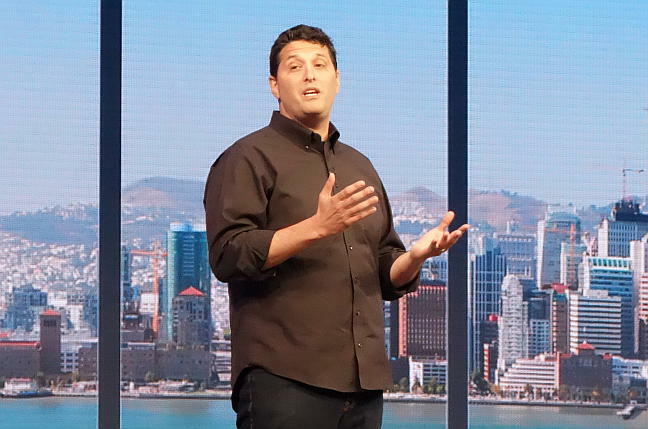
OxyContin: Pain Relief vs. Abuse Are worries over abuse having an impact on the drug's legitimate use as a painkiller? From time to time, OxyContin abuse flares up as a hot topic around the water cooler. If it isn't celebrities in the news for abusing the prescription painkiller, it's reports of drug-dealing doctors and overdose deaths. Add to that a law enforcement crackdown on OxyContin, and the result is a backlash affecting legitimate use of the drug: Many chronic pain sufferers won't take OxyContin for fear of becoming addicted, and some health care providers refuse to write OxyContin prescriptions for fear of being prosecuted. WebMD talked to experts about OxyContin as a legitimate medication for moderate to severe pain, the dangers of abuse, the issue of addiction, and the climate of suspicion that restricts patients' access to the drug. OxyContin Use and Abuse OxyContin is the brand name for a timed-release formula of oxycodone, a narcotic analgesic (medication that reduces pain). It's used to relieve pain from injuries, arthritis, cancer, and other conditions. Oxycodone, a morphine-like drug, is found along with non-narcotic analgesics in a number of prescription drugs, such as Percodan (oxycodone and aspirin) and Percocet (oxycodone and acetaminophen). OxyContin contains between 10 and 80 milligrams of oxycodone in a timed-release formula that allows up to 12 hours of relief from chronic pain. What distinguished OxyContin from other analgesics was its long-acting formula, a blessing for patients who typically need round-the-clock relief. "If you have pain that's there all the time, four hours goes by very quickly," says cancer specialist Mary A. Simmonds, MD. "If you're not watching the clock, the pain comes back. People tend not to take their pills on time. The pain builds back up, so you're starting over. It's not very good management of pain." Simmonds gave testimony on the value of OxyContin for alleviating cancer pain at a 2002 Congressional hearing. "For moderate to severe pain, aspirin and Tylenol aren't effective. We do need opioids." It's the high content of oxycodone that makes OxyContin popular on the street. People who abuse the drug crush the tablet and swallow or snort it, or dilute it in water and inject it. This destroys the time-release mechanism so that the user gets the full effects of the narcotic. Users compare the high to the euphoria of heroin. "What makes OxyContin dangerous is not only that it's addictive, it can also be lethal," says Drew Pinsky, MD, best known for his Loveline radio show. "It makes you feel you can tolerate more, but it can precipitate respiratory failure, especially when used with other drugs like alcohol or benzodiazepenes." Street names for OxyContin include OC, Kicker, OxyCotton, and Hillbilly Heroin. According to the U.S. Drug Enforcement Administration (DEA), oxycodone has been abused for more than 30 years. But with the introduction of OxyContin in 1996, there has been a marked escalation of abuse. According to the U.S. Department of Health and Human Services 2006 revised Substance Abuse Treatment Advisory on OxyContin, the regions most affected are eastern Kentucky, New Orleans, southern Maine, Philadelphia, southwestern Pennsylvania, southwestern Virginia, Cincinnati, and Phoenix. However, the DEA says the problem has spread across the country. While there is special concern about teens' use of OxyContin, the percentage of 12th graders who said they had abused the drug in the past year declined in the 2006 Monitoring the Future survey of the National Institute on Drug Abuse (NIDA). The information is summarized in "NIDA Infofacts: High School and Youth Trends." Abuse of OxyContin decreased for the first time since its inclusion in the survey in 2002, from 5.5% in 2005 to 4.3% in 2006. Drug Tolerance vs. Addiction Chronic pain patients often confuse tolerance with addiction. They become fearful when the dosage of a narcotic has to be increased, but it's normal for the body to build up tolerance over time, says Simmonds, spokeswoman for the American Cancer Society. "Patients don't get a high, and they don't get addicted." Simmonds, who is in private practice in Harrisburg, Pa., tells WebMD, "The tragedy is that any day of the week a patient will be in my office in real pain, and a family member will say, 'Don't take morphine.' Patients will suffer needlessly because they think they'll get addicted. We have to take time to educate them." Kathryn Serkes, director of policy and public affairs for the Association of American Physicians & Surgeons (AAPS) in Tucson, Ariz., agrees. She says the standard of pain management care is more aggressive today than what it was just five years ago. She disagrees with some critics who would use OxyContin only as a last resort. "The phrase 'addicted to painkillers' is used fast and loose." Treatment of Pain in Addicts Is it inhumane, as some in pain management believe, to withhold opiates from someone in pain who has a history of addiction? No, say two experts in chemical dependency who talked with WebMD. "Medical professionals need to be educated about addictions," says Peter Provet, PhD, president of Odyssey House Inc., in New York City. "A problem with addicts is they don't like pain of any kind. They've been medicating their emotional pain, physical pain, or familial pain. The addict is quick to ask for a pill, but sometimes we have to deal with our pain. "All other kinds of treatment should be first considered before the physician jumps to what is the easiest solution, a synthetic opiate," he tells WebMD. "An addict or recovering addict suffering pain from cancer or after a car accident should talk with a physician well-versed in addiction. On occasion, someone who is in recovery may need a drug like OxyContin. It would need to be done thoughtfully with full knowledge of addiction, and then the treatment should be very carefully monitored." Pinsky, author of When Painkillers Become Dangerous: What Everyone Needs to Know About OxyContin and Other Prescription Drugs, says the risk of addiction is so great, not only for addicts but for anyone genetically prone to addiction, that any patient who comes forward with pain should first be asked if there is a family history of alcoholism or addiction. "How does the health care provider know who is genetically predisposed to addiction? It may be hidden back three generations. The risk is triggering opioid and opiate addiction, the addiction with the poorest prognosis." Opioids and opiates act similarly on the brain and the terms are often used interchangeably, but unlike opiates, opioids -- such as methadone -- are not morphine based. Pinsky admits to holding a minority view when he says no one should be treated with opiates more than two weeks, particularly if there's a family history of addiction. "If you have a history of addiction and have an extraordinary need to go beyond two weeks, it needs to be monitored very carefully by someone in the addiction field." He says there are many non-narcotic pain medications, such as Toradol, and alternative therapies, such as acupuncture, massage, and chiropractic treatment. Treatment of Pain in Addicts continued... Pinsky, who is medical director for the department of chemical dependency services at Las Encinas Hospital in Pasadena, Calif., tells WebMD he admits at least two patients a day for overusing painkillers. "They've been addicts all along. They didn't suddenly develop an addiction. They come to me with overwhelming pain -- back pain, neck pain, headaches. They can't sleep." He says chronic physical pain in addicts is often an expression of past trauma. Drugs relieve the pain but feed the addiction. His approach is to take them off the pain medicine. "I say it will be the worst pain of your entire life for two weeks, but that will be the end of it. Meanwhile, we do 12-step and group therapy programs with them and intensive treatment of their withdrawal." The Backlash of OxyContin Abuse In certain parts of the country, the crackdown on illegal use of OxyContin has made it hard for pain patients to get legitimate prescriptions. "OxyContin was the first prescription medication listed as a drug of concern by the federal Drug Enforcement Agency, which made it a target," says Ronald T. Libby, PhD. The drug, Libby says, is "monitored by pharmacies and [Perdue] Pharma, the maker of OxyContin. Some physicians, knowing the DEA or sheriff is looking at these scripts, refuse to write prescriptions for fear of prosecution. Doctors can be scammed, and if a patient takes some pills and sells some, the doctor can be guilty of diversion." Libby is the author of a Cato Institute policy report titled "Treating Doctors As Drug Dealers: The DEA's War on Prescription Painkillers" andprofessor of political science and public administration at the University of North Florida in Jacksonville. "The war on drugs has become a war on legal drugs, on patients who take them, and on doctors who prescribe them," Serkes tells WebMD. The Association of American Physicians & Surgeons has issued a warning to doctors: "If you're thinking about getting into pain management using opioids as appropriate, don't. Forget what you learned in medical school -- drug agents now set medical standards. Or if you do, first discuss the risks with your family." The Backlash of OxyContin Abuse continued... Libby, who is writing a book entitled The Criminalization of Medicine: America's War on Doctors, says OxyContin can be safer to take than nonsteroidal anti-inflammtory drugs (NSAIDs) such as ibuprofen and aspirin. "OxyContin does no damage to internal organs, but NSAIDs irritate the stomach lining, liver, and other organs." Pinsky says, "If you had cancer you would thank God OxyContin exists. Unfortunately there's a huge social movement vilifying it as an evil product of drug companies. It's total nonsense. The drug itself is not bad. It's a great medication, but it has to be used by skillful clinicians." Finding Balance It's a challenge to balance the needs of chronic pain patients, health care providers, the chemical dependency treatment community, and law enforcement. But efforts are under way. The Pain & Policies Study Group at the University of Wisconsin Paul P. Carbone Comprehensive Cancer Center issues annual progress report cards evaluating states' policies regarding the use of opioid analgesics in pain management. The concern is that cancer pain is often undertreated, and opioids like OxyContin are essential. Evaluation scores reflect a balanced approach in which law enforcement practices to prevent diversion and abuse do not interfere with the medical use of opioid analgesics in treating pain. In the group's 2006 report, it was noted that policies adopted in the last decade by 39 state legislatures and medical boards addressed doctors' concerns about being investigated for prescribing opioid pain medications. The report concludes: "Despite a growing effort by policymakers and regulators, the fear of regulatory scrutiny remains a significant impediment to pain relief and will take years of further policy development, communication, and education to overcome." | 


















